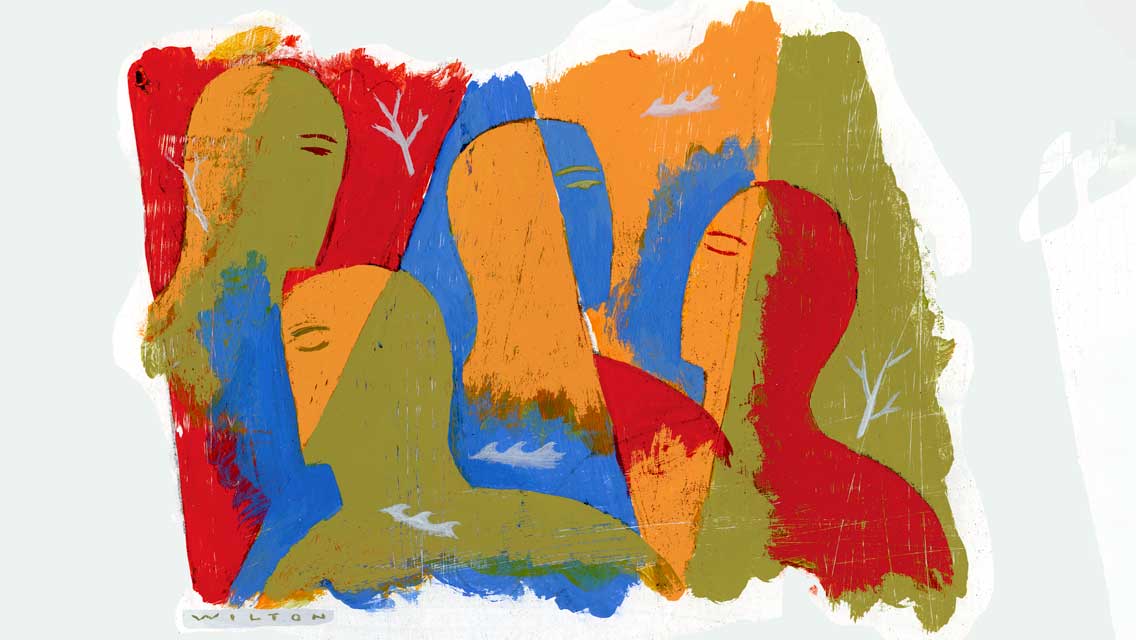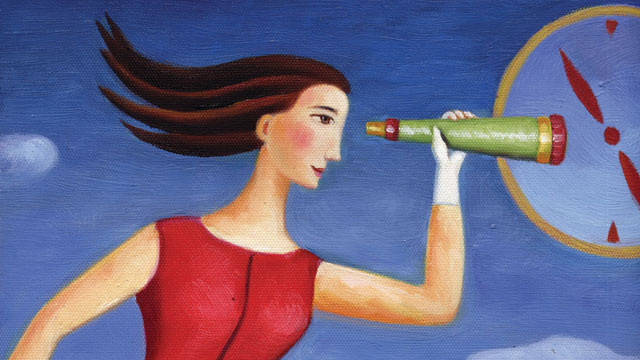Just after WWII ended, a former U.S. soldier began to have a series of dreams that he was back in the army. In the dream, he tried to take cover during an intense firefight by curling up inside the hollow of tree. Despite his efforts, his dream self always got shot in the lower left side of his chest. The dream continued until doctors discovered a small tumor growing in the lower lobe of the man’s left lung, right where he had been “shot” in the dream.
What happened to this veteran, whose case was first documented in a 1950 issue of the International Journal of Psychoanalysis, wasn’t some kind of divination or prophecy — it was a message from his subconscious that all was not right in his body. What he experienced was intuition, a type of bodily “knowing” that researchers are discovering isn’t otherworldly at all. Intuition has a very real biochemical basis, and the science of “just knowing” is gaining academic respect and mainstream popularity.
If you’ve ever “felt something in your bones” or “had a gut feeling,” you’ve experienced intuition — and you’ve gotten a glimpse of how this type of wisdom can help us better understand our own bodies.
Understanding Intuition
Often described by researchers as “rapid cognition” or “condensed reasoning,” intuition is an unconscious associative process in which the brain assesses a situation, does a search of its sprawling catalog of symbols, and then matches what it finds to the situation at hand. It’s like a rapid, unconscious game of Go Fish.
“It isn’t magic, it isn’t a gift, it isn’t something that only special people have,” says Caroline Myss, PhD, a medical intuitive and author of several best-selling books on intuition, including Anatomy of the Spirit: The Seven Stages of Power and Healing. “Intuition is an inherent survival force that all people have, just as all animals have instincts.”
Intuitive hits can feel untrustworthy because they don’t come to us through the more familiar channels of logic and reason. Intuition sends information through your subconscious, a part of your mind that psychologist and Princeton University professor Daniel Kahneman, PhD, described in his 2002 Nobel Prize lecture as our “Track 1” — our behind-the-scenes self, where we are fast, automatic, effortless, emotionally charged and not available to introspection. Messages from our subconscious come to us as knowings, feelings, gut responses, emotional or physical impulses, dreams, or symbols.
Somatic psychologists believe we must function with such dual minds because the human body can sense some 40 million bits of information per second while the conscious mind can process only a tiny fraction of those — just 40 bits per second. If we had to consciously process all the millions of bits of information we encounter, we’d be too overwhelmed to function; if we were limited to taking in only those 40 per second, we’d miss too much to survive.
How Intuition Works
Tammy Turner, of Lakewood, Colo., experienced this phenomenon firsthand in November 2005, when she awoke from a dream thinking about the pap test she had scheduled for the following month. She had no conscious reason to reschedule the appointment — no symptoms, no pain. But some gut instinct told her to see her doctor — pronto. Her moved-up exam revealed she had stage 1 cancer. By the time she had a portion of her cervix removed, it had advanced to stage 2. Turner’s gut feeling had paid off: The quickly scheduled operation worked and Turner is now cancer-free.
How does relevant information travel from parts of the body — such as Turner’s cervix or the veteran’s lung — to the brain? “It’s not like there’s a big nerve running from a lung tumor to the brain,” says psychoimmunologist and pharmacologist Candace Pert, PhD. And yet the information flow between such organs seems nearly that direct.
Pert’s research suggests that the afferent nervous system — which carries sensory impulses back to the central nervous system — acts like a gossip chain, in which the cells communicate using a language of molecules known as peptides and receptors. She believes body “gossip” can percolate through the subconscious as a dream, symbol, gut feeling, mood or symbol. In one such case, a woman dreamt for more than a year that a lit candle was being held to her leg, until doctors discovered she had osteomyelitis, a severe infection of the bone in just that spot.
Arthur D. Craig, PhD, a neuroscientist at the Barrow Neurological Institute in Phoenix, believes he may have identified the receiving and processing department for all that body talk: a pair of prune-size pieces deep within the brain called the insula that act as clearinghouses for human emotion.
In other words, the body’s cells communicate and the brain’s insula decodes their message. “The mind is generated by the body, and the body is generated by the mind,” Pert explains. “I don’t even like to hyphenate the word bodymind — the spheres are too interconnected for that.”
Uncommon Sense
You can gain profound wisdom by listening to intuition. But it does take practice and reflection to do so, as well as a willingness to bypass the occasional doubts of your conscious mind. Also, each individual receives intuitive “hits” differently.
“There’s a range of how people experience intuition,” says Judith Orloff, MD, author of Dr. Judith Orloff’s Guide to Intuitive Healing. “Some people hear an inner voice, other people get a physical sensation, like in the pit of their stomach, some have vivid dreams, and some see visual clues, like symbols. The key is in identifying how your body gives you its messages.”
No matter how you experience these intuitive hits, Orloff says, they often arrive with strong emotions. If you meet a new doctor, for instance, and find yourself crossing your arms over your chest, leaning back and mentally running out the door, that’s your body telling you, “This person is not the right fit for me!”
This was certainly true for Cindy, a client of the intuitive healer and physician Mona Lisa Schulz, MD, PhD. A divorce mediator, she was having painful psoriatic arthritis attacks until she made the connection that her attacks were actually intuitive signs that a client was lying to her. Over time, with Schulz’s guidance, Cindy learned how to heed her intuition and stop her arthritis from escalating into a full-blown attack.
With practice, we can all enjoy deeper insight and wisdom about our physical selves — and use that wisdom to tend to our health. All it takes to get started is a willingness to hear what our bodies have been saying all along.
More Than a Feeling
Intuition can give you important feedback about what’s happening in your body. Try some of these exercises to kick-start your own intuitive powers.
Start small. Begin to recognize how your body receives intuitive “hits” by performing a few simple experiments. Ask yourself which line will move the fastest at the supermarket, what the person ahead of you will order at the coffee shop or what your friend will wear to dinner. Do you feel a sensation in your stomach, bones or chest? Do you have a sense of “knowing” or hear the answer inside your head? These exercises will sharpen your intuitive skills and give you a sense of your intuitive style.
Look within. Every day, our minds are filled with chatter and minutiae. Carve out a space and time to clear your mind and get beneath all that noise. Meditation, says Judith Orloff, MD, is like the bench press for strengthening your intuitive muscles. Sit quietly, breathe deeply and notice if any thoughts or images come to you.
Dream on. Place a journal and pen at your bedside. Before going to sleep, pose one specific question. For instance, “Is this job right for me?” The next morning, stay under the covers for at least a few minutes recalling your dreams, and then jot them down.
This article has been updated. It was originally published on June 1, 2008.




This Post Has 0 Comments